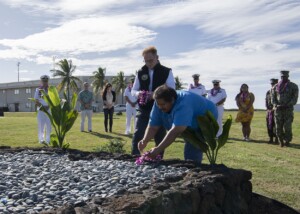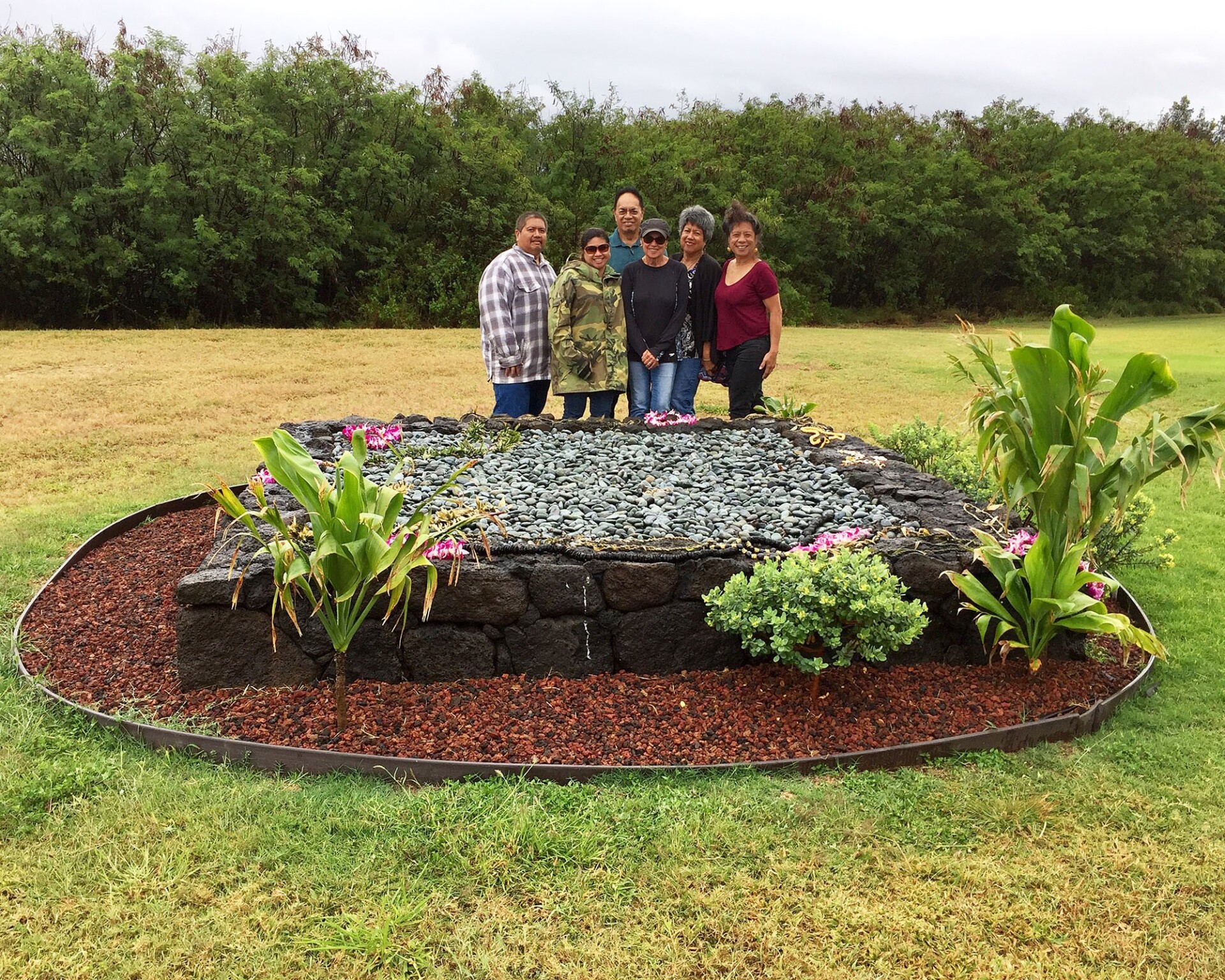Background
The U.S. Navy’s Pacific Missile Range Facility (PMRF) occupies 2,475 acres in the moku of Kona and the Ahupua‘a of Manā on the west side of the island of Kaua‘i. PMRF is the world’s largest instrumented multi-environment range capable of supporting subsurface, surface, air and space testing and training operations. PMRF encompasses seven miles of continuous shoreline. Prior to military and sugar production support, the land was used solely for sustenance.
Nohili dunes is located within the Pacific Missile Range Facility at Barking Sands. It is recognized as a powerful wahi pana by native Hawaiians with some practitioners considering it a spiritual ascending point or leina where the spirits of past Hawaiian ancestors ascend to lani (heaven). Chants, songs and hula celebrate and describe Nohili as a thriving place with many resources such as an abundance of fish, fauna and flora-like Kauna’oa*, that provide food and medicine. Kumu and students are drawn here to visit and honor their ancestors. Many cultural practitioners from around the world bring their hālau to Nohili to present a ho‘okupu (offering) in the form of hula, mele, oli and/or lei in exchange for spiritual mana or energy.
*Ancient Hawaiian la’au lapa’au, herbal medicine experts, combined kauna’oa with other plants to treat chest colds, clean out the gastrointestinal tract, and assist women before and after childbirth. Source: https://www.mauimagazine.net/kaunaoa/
The Project
Over time coastal erosion of the Nohili dune areas has exposed iwi kūpuna (ancestral human remains). The Lua Kupapau O Nohili crypt was constructed as a way to provide a weatherproof structure to preserve, protect, and appropriately handle and honor iwi kūpuna found there.
The crypt was completed in June of 2019 and consists of a 6 x 6 x 6-foot concrete shoebox lid-like locker vault surrounded by 8 x 8 x 1-foot lava rock and filled in with polished black river rocks. Native ti and royal ‘ilima plants surround the outside of the crypt.
The project developed as a community-minded effort between the Navy and families whose ancestors were interred in the area following traditional practices. Several organizations within the Navy including PMRF, Naval Facilities Engineering Command (NAVFAC) Pacific and NAVFAC Hawai‘i, worked together with Na ‘Ohana Papa O Mana, a group comprised of the families with ancestral ties to this region in this region. The project serves as a place for members of Na ‘Ohana Papa O Manā to pay respects to familial ancestors, and for the US Navy at PMRF to honor the living ‘Ohana as partners in stewardship of cultural resources. Cultural practices including the intimate ceremony Na ‘Ohana Papa O Manā takes part in on the Summer Solstice to place the recently discovered iwi kūpuna with the previously interred remains are observed.

Acting Secretary of the Navy Thomas B. Modly places lei with Thomas Nizo, base operations specialist, during his January 16, 2020 visit to PMRF.
The project has received high profile visitors including Senator Mazie Hirono, Senator Brian Schatz and the Secretary of the Navy. The Crypt offers an ongoing opportunity to share the history of this wahi pana and allow visitors to honor the ancestors with placement of lei on top of the ‘ahu (altar). The project is an inspiring example of a community driven, mutually beneficial solution honoring native Hawaiian cultural resources and practices.
Lua Kupapaʻu O Nohili Crypt received a 2020 Preservation Award for Achievement in New Construction. The award was presented to Na ‘Ohana Papa O Mana, NAVFAC Pacific-US Navy, NAVFAC Hawai‘i-US Navy, and Pacific Missile Range Facility-US Navy.


